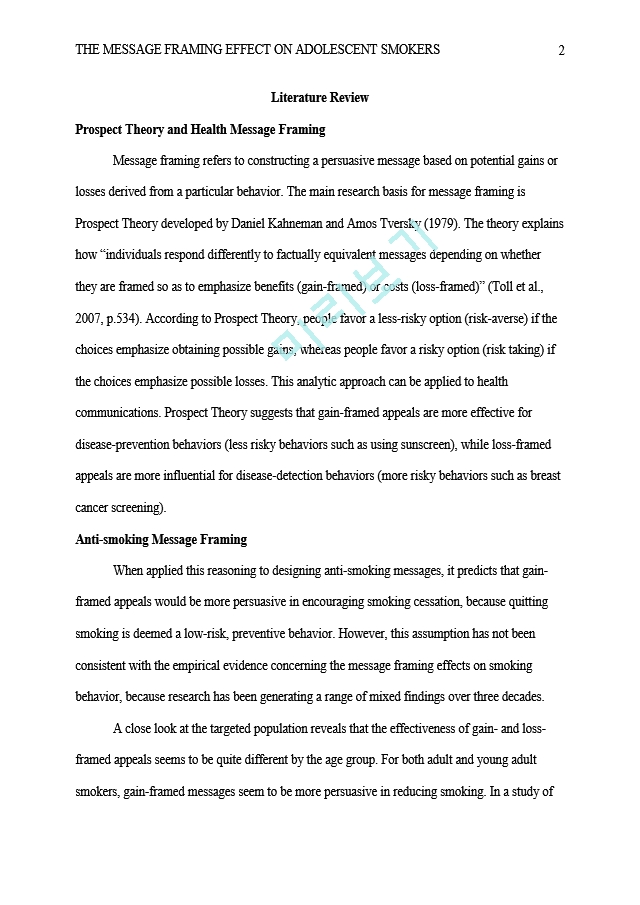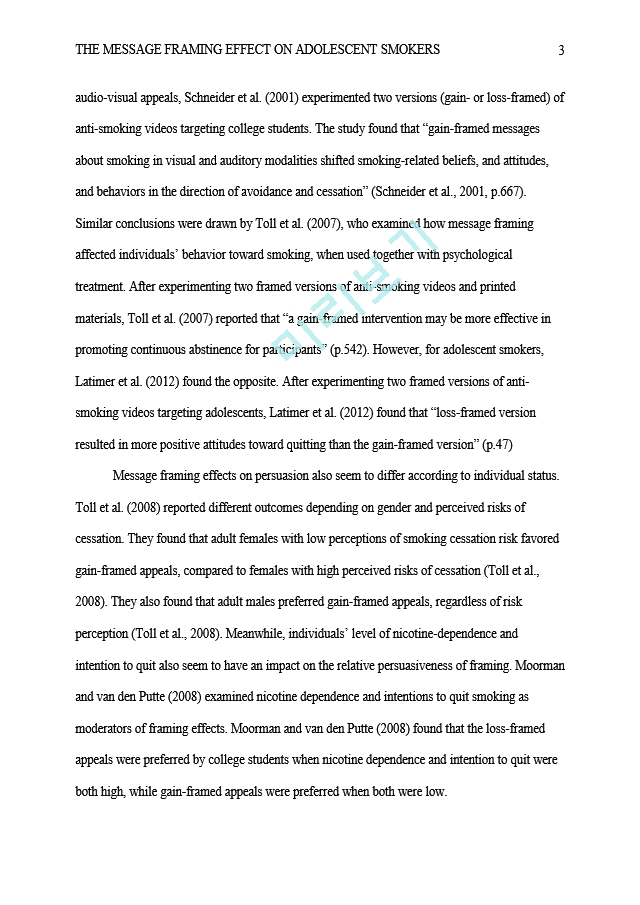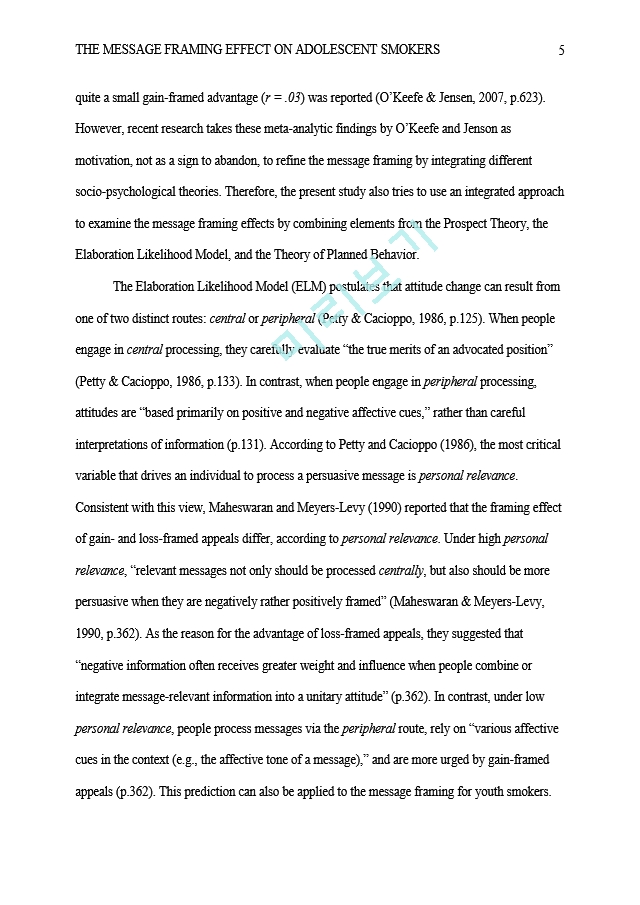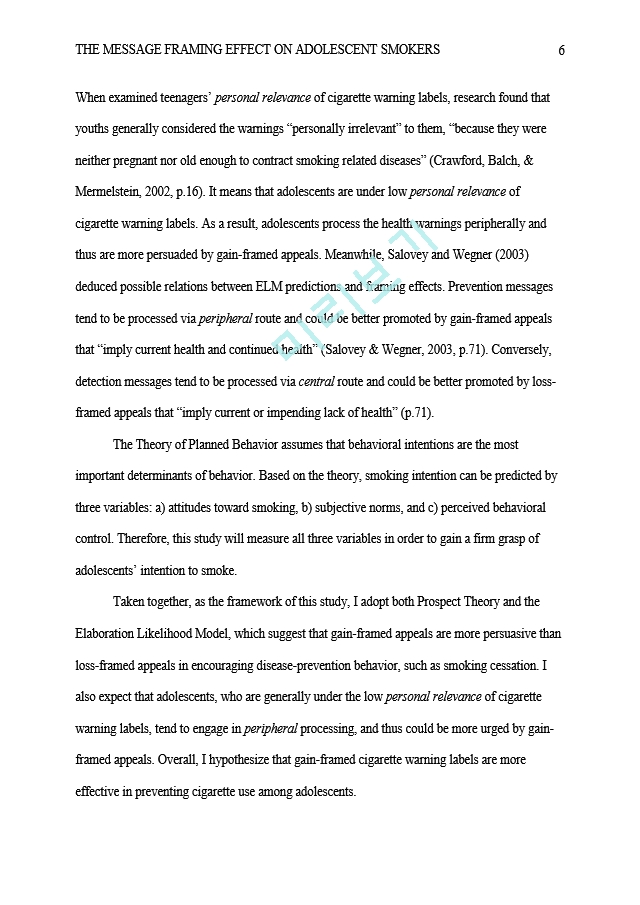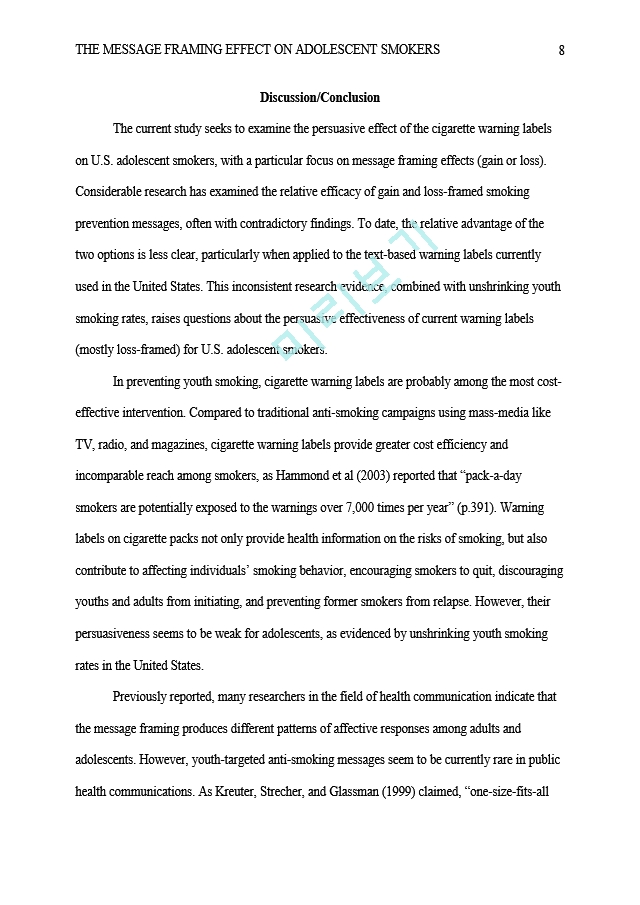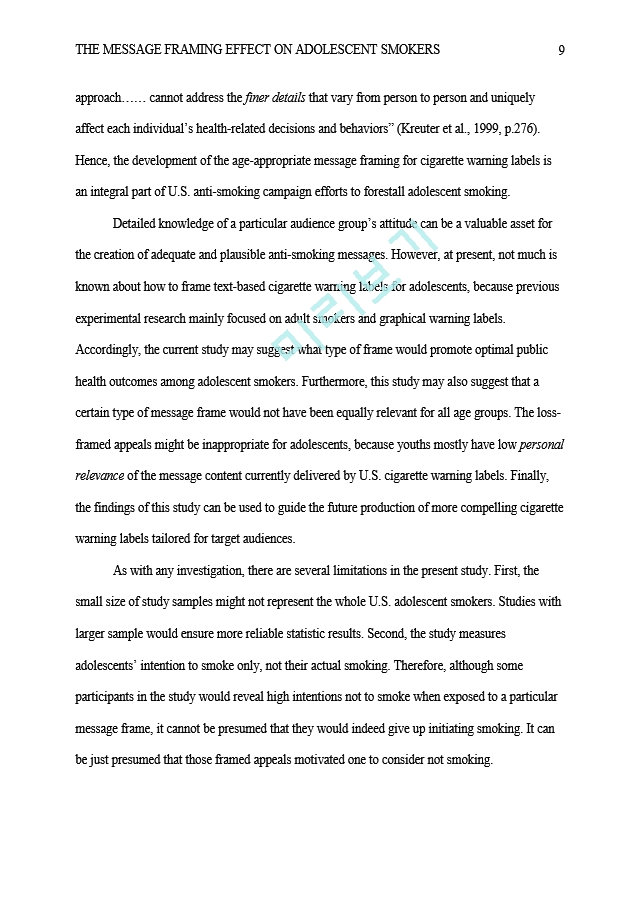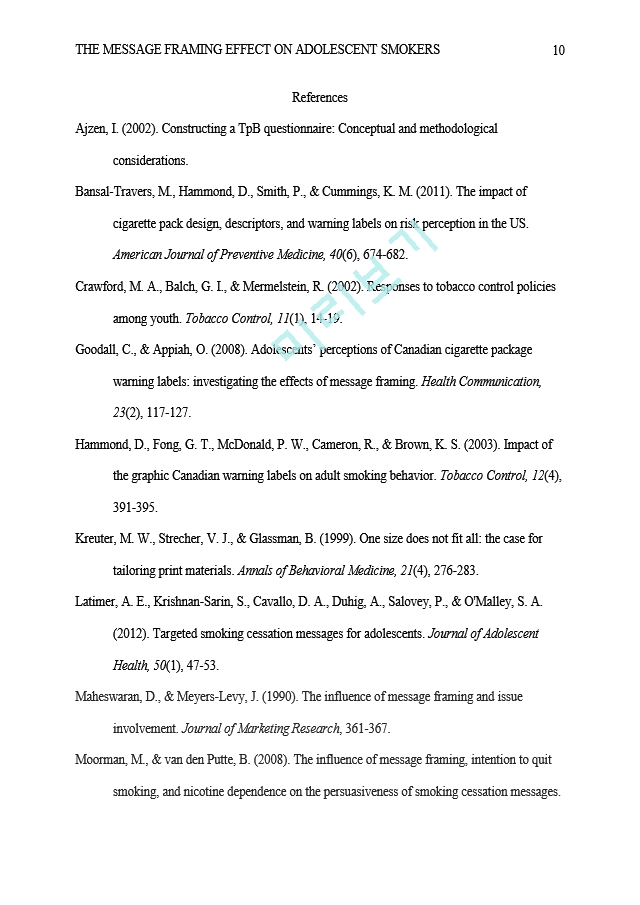|
Preventing cigarette use among adolescents is critical for the United States to reduce smoking-related diseases and deaths. Health warnings on cigarette packages are among the most cost-effective means to communicate with teen smokers. Both Prospect Theory and the Elaboration Likelihood Model suggest gain-framed appeals (promoting the benefits of quitting smoking) to be more effective than loss-framed appeals (emphasizing the costs of smoking) in youth smoking prevention. However, there is a clear gap between theories and practice, because U.S. cigarette warning labels almost exclusively observe loss-framed appeals. Furthermore, research concerning the message framing effects on smoking behavior often produces contradictory findings. Combined with undiminished youth smoking rates, inconsistent empirical findings raise questions about the real effectiveness of loss-framed warnings for U.S. adolescents. Hence, the present study seeks to examine which type of frame for cigarette warning l…(생략)
|













